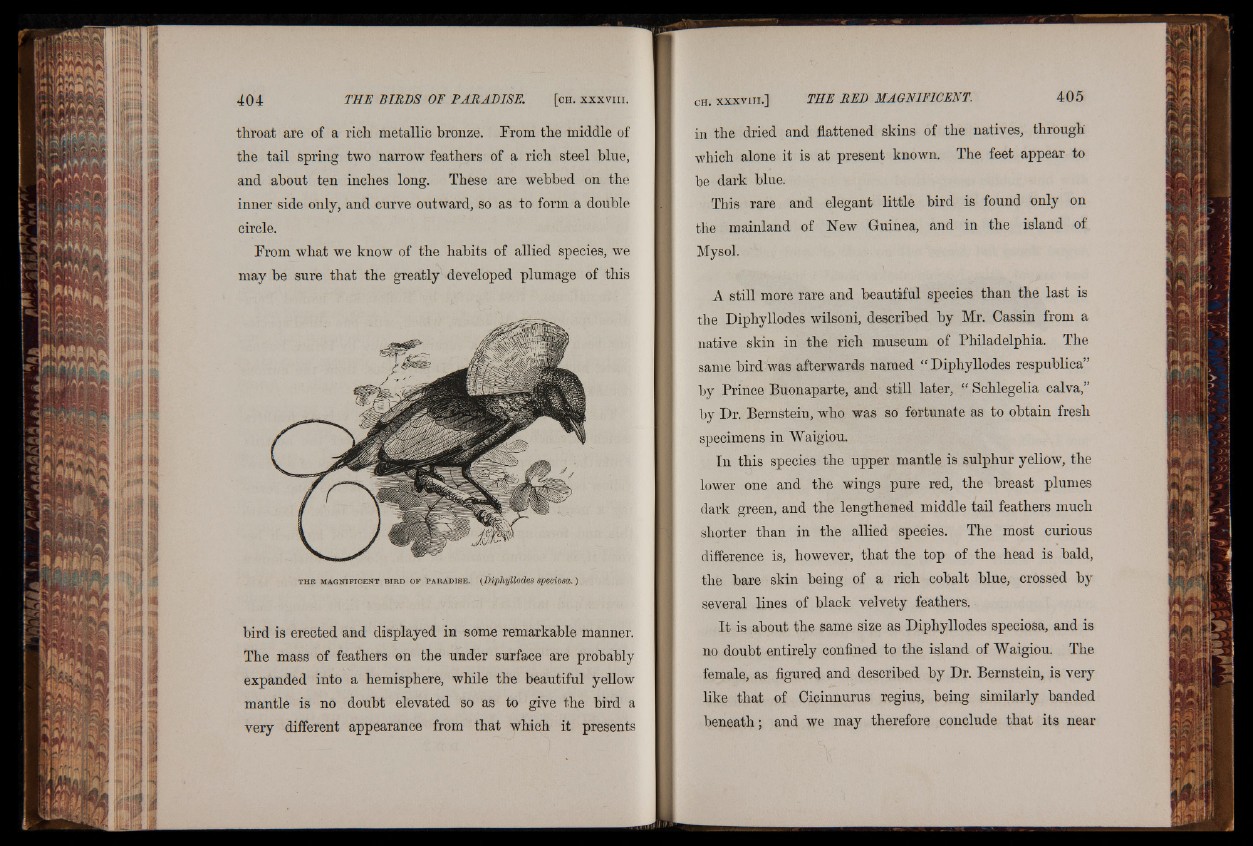
throat are of a rich metallic bronze. From the middle of
the tail spring two narrow feathers of a rich steel bine,
and about ten inches long. These are webbed on the
inner side only, and curve outward, so as to form a double
circle.
From what we know of the habits of allied species, we
may be sure that the greatly developed plumage of this
THE MAGNIFICENT BIRD OF PARADISE. (DipliyllodeS SpetiOSa. )
bird is erected and displayed in some remarkable manner.
The mass of feathers on the under surface are probably
expanded into a hemisphere, while the beautiful yellow
mantle is no doubt elevated so as to give the bird a
very different appearance from that which it presents
in the dried and flattened skins of the natives, through
which alone it is at present known. The feet appear to
be dark blue.
This rare and elegant little bird is found only on
the mainland of New Guinea, and in the island of
Mysol.
A still more rare and beautiful species than the last is
the Diphyllodes wilsoni, described by Mr. Cassin from a
native skin in the rich museum of Philadelphia. The
same bird was afterwards named “Diphyllodes respublica”
by Prince Buonaparte, and still later, “ Schlegelia calva,”
by Dr. Bernstein, who was so fortunate as to obtain fresh
specimens in Waigiou.
In this species the upper mantle is sulphur yellow, the
lower one and the wings pure red, the breast plumes
dark green, and the lengthened middle tail feathers much
shorter than in the allied speeies. The most curious
difference is, however, that the top of the head is bald,
the bare skin being of a rich cobalt blue, crossed by
several lines of black velvety feathers.
It is about the same size as Diphyllodes speciosa, and is
no doubt entirely confined to the island of Waigiou. The
female, as figured and described by Dr. Bernstein, is very
like that of Cicinnurus regius, being similarly banded
beneath; and we may therefore conclude that its near